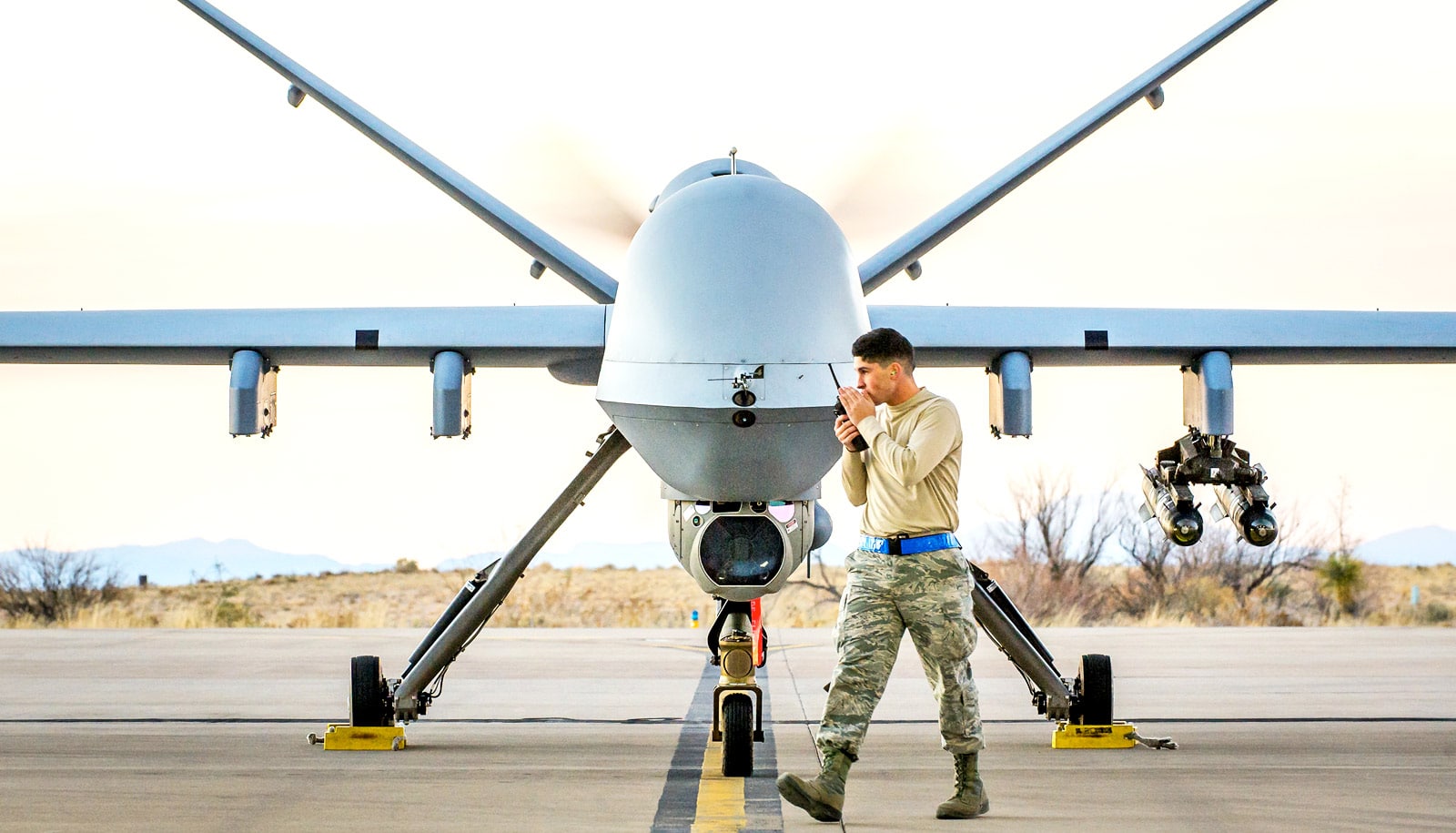Countries that simply possess deadly, armed drones could change an adversary’s behavior without even striking them, according to new research.
“Armed drones are likely to offer coercion ‘windows of opportunity’ in at least one important circumstance: states that have armed drones confronting states that do not,” says Amy Zegart, political scientist at Stanford University.
“As wars grow longer and less conclusive, armed drones enable states to sustain combat operations, making threats to ‘stay the course’ more believable.”
Zegart believes that drone technology is becoming a more effective instrument to change a state’s behavior than yesteryear’s more costly option of using ground troops or large-scale military movements in war or conflict.
“Drones may be turning deterrence theory on its head,” says Zegart, referring to the cost-benefit calculation a potential aggressor makes when assessing an attack.
Zegart’s focus is on next-generation drones, which are essentially unpiloted fighter jets and are currently in development. She is not examining the use of existing drones like quadcopters and Reaper and Predator unmanned aerial vehicles.
Three coercion advantages
Zegart’s research, published in the Journal of Strategic Studies, is based on surveys of 259 foreign military officers that took place between 2015 and 2017. Participants were highly experienced foreign military officers who were attending classes at the National Defense University and Naval War College.
A drone is an unmanned aircraft that can be piloted remotely to deliver a lethal payload to a specific target.
Today, Zegart says, many scholars are studying whether drone proliferation across the world could change the future of warfare.
“But even here the focus has been the implications for the use of force, not the threat of force,” says Zegart, director of Stanford’s Center for International Security and Cooperation, and senior fellow at the Hoover Institution.
New weapons often evolve technologically before “game-changing ideas” occur about how to use them.
New drones are more lethal than ever, offering greater speeds, ranges, stealth, and agility, according to Zegart. The US is ahead, but not alone, in using drones. Nine countries have already used armed drones in combat, and at least 20 more are developing lethal drone programs—including Russia and China.
“It is time for a rethink” about drones, Zegart says. Technological advances will soon enable drones to function in hostile environments better than ever before.
“Drones offer three unique coercion advantages that theorists did not foresee: sustainability in long duration conflicts; certainty of precision punishment, which can change the psychology of adversaries; and changes in the relative costs of war,” she says.
Threats involving a high cost may be actually less credible than assumed, says Zegart. Her findings challenge the belief of “cost signals,” a military strategy where a country threatens another with a high-cost option, such as ground troops, which is intended to show resolve.
Why big data can’t predict the next armed conflict
Drones may actually signal a nation’s resolve more effectively because—as a low-cost option—they can be part of an enduring offensive campaign against an enemy.
“The advent of armed drones suggests that costly signals may no longer be the best or only path to threat credibility,” she says.
“In situations where a coercing state has armed drones but a target state does not, drones make it possible to implement threats in ways that impose vanishingly low costs on the coercer but disproportionately high costs on the target,” Zegart says.
It’s happened before
Zegart says that throughout history, whenever a new military technology emerges, adversaries have basically faced two choices—either concede or innovate to overcome the other side’s advantage.
“There is no reason to expect drones will be any different. The more that drones are used for combat and coercion, the more likely it will be that others will develop drone countermeasures,” she says.
New weapons often evolve technologically before “game-changing ideas” occur about how to use them, Zegart adds. This was true of submarines before World War I, tanks after World War I, airplanes (which originally replaced surveillance balloons and were not used to drop bombs until 1911), and nuclear weapons during the Cold War.
Do nuclear weapons make us more or less safe?
“While physicists in the Manhattan Project developed the first atom bomb in just three years, it took much longer to develop the conceptual underpinnings of deterrence that kept the Cold War cold,” she says.
Drones raise important questions about the role of machines in decision-making during conflict, Zegart says. For example, much has been debated and written about the ethical and legal issues raised by US drone strikes, the usefulness of drone operations against terrorist groups, and whether the Pentagon or CIA should control and operate the drones.
Such questions are likely to grow more “numerous and knotty” as drones and other technologies evolve, she says.
Source: Stanford University



